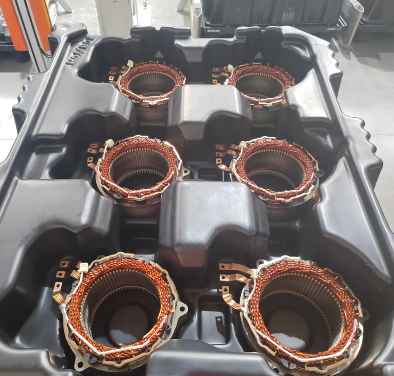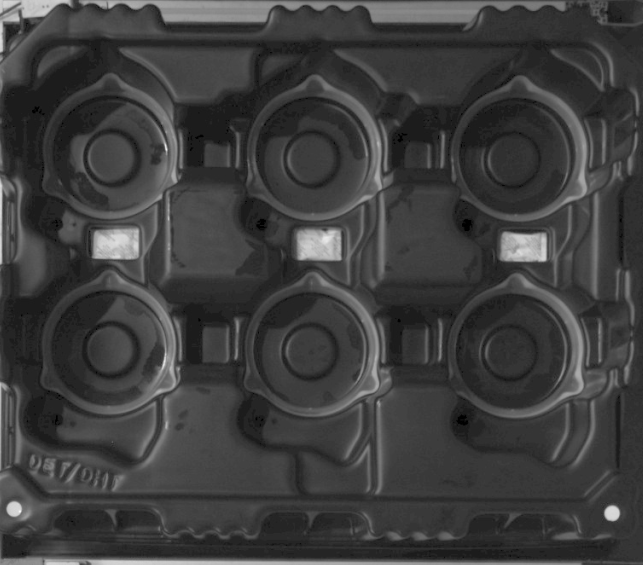Basics
This section introduces the basic information about the Stators solution, including its applicability, advantages, technical specifications, etc.
Applicable
The table below introduces the applicability of the Stators solution in terms of object types, object materials, placement, carriers, etc.
| Applicable | Illustration | |
|---|---|---|
Object type |
Stators |
|
Object material |
Metal |
|
Placement |
Neat arrangement |
|
Object carrier |
Part trays |
|
Solution Advantages
The advantages of this solution are as follows:
-
Suitable for picking stators of different specifications.
-
Use the latest imaging algorithms to ensure stable imaging of the stators and part trays.
-
Use the latest target object recognition algorithms to stably recognize the orientations of target objects.
-
By exploring typical cases in the software with the guidance of this document, beginner engineers can quickly deploy a vision solution.
Technical Specifications
The following table describes the technical specifications of the solution.
| Positioning accuracy | Recognition success rate | Execution time of vision system | Bin clearance rate | Tuning duration |
|---|---|---|---|---|
±2 mm |
More than 99% |
Less than 4 s |
More than 99% |
8 h × 2 (single type target object)
|
Project Difficulties
The difficulties of this solution are as follows:
-
Stable imaging: The vision system is expected to generate high-quality point clouds despite the challenges posed to the imaging algorithms by the stators’ highly reflective and complex upper surface, combined with the pure black part tray beneath it.
-
Accuracy of positioning and picking: To avoid damaging the target objects, it is necessary to ensure high accuracy in positioning and picking. Additionally, to ensure the integrity of the target objects, you need to select appropriate tool and pick point while considering factors such as robot motion path constraints and collision avoidance.
-
Flexible and easy to use: Suitable for picking stators of different specifications. The vision solution needs to be easy to deploy while meeting users’ requirements for efficiency, cost control, and other factors.



